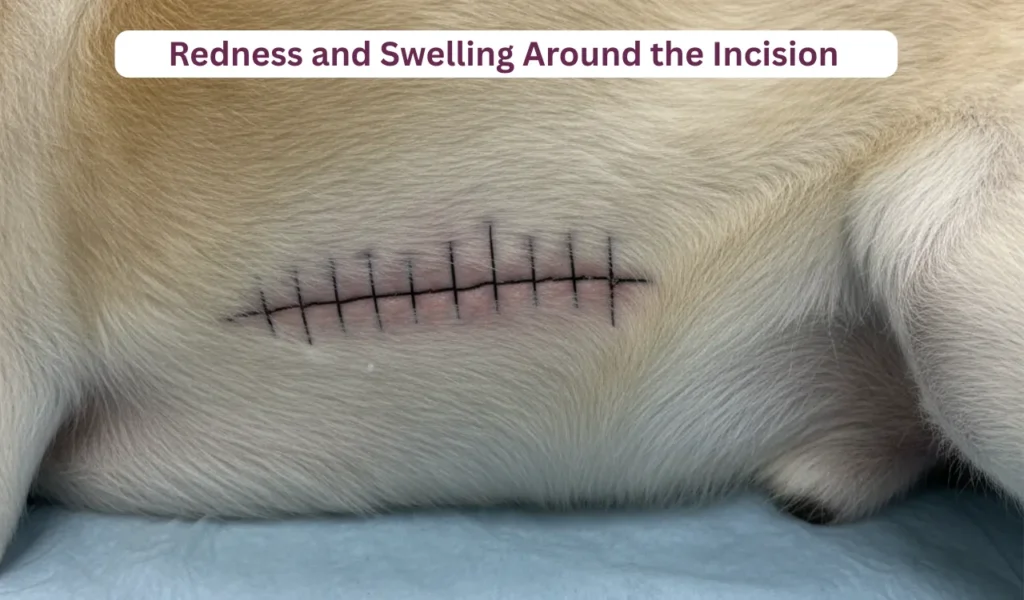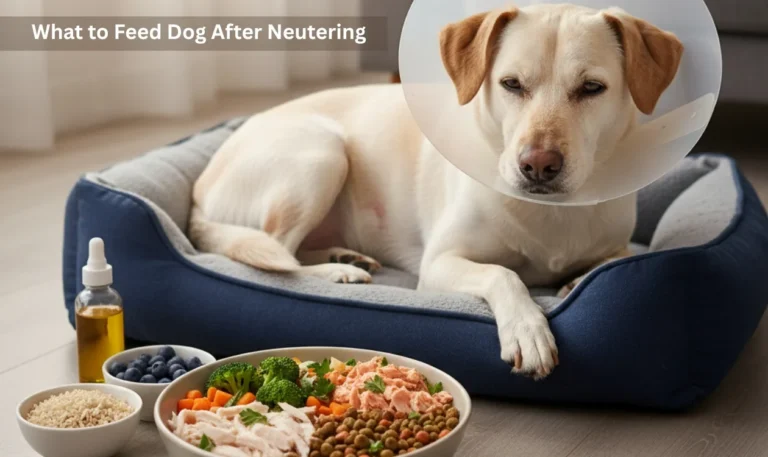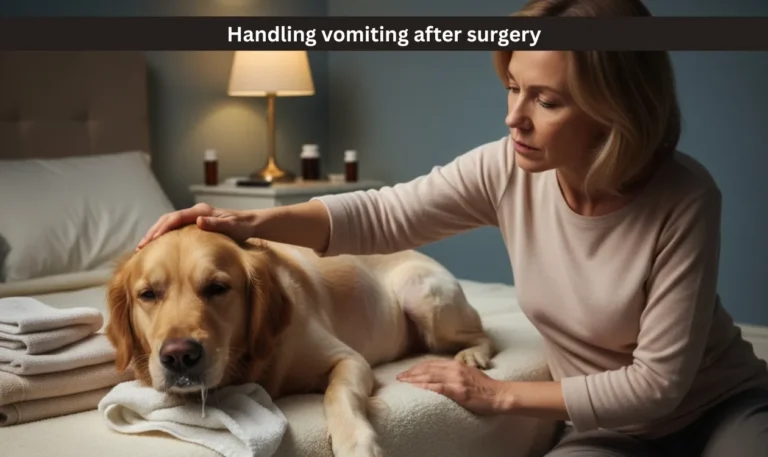Signs of Infection After Neutering : Complete Guide
Learn the key signs of infection after neutering, from swelling and redness to discharge and fever, to protect your dog’s health and ensure fast recovery.
Dogs cannot be assured of full recovery after neutering, as some dogs might have some discomfort, though considerable pain/swelling are indicators of infection. It is essential to identify symptoms at the initial stage in order to avoid further complications. Being aware of what is to watch out at will get your dog medical care promptly and you will be on your way. Knowing the difference between normal and worrying is one of the ways of making owners take care of their pets without fear.
Post-neutering infection normally manifests itself within the first week of the surgery. This may be accompanied by erythema, exudate, or a strange smell in the area of incision. The promptness of action would help avoid such worse issues as abscesses or systemic infections. Early prevention will guarantee quick recovery and a comfortable healing process of your furry friend. Proper dog care during this period, including keeping the wound clean, monitoring for unusual discharge, and following the vet’s post-surgery instructions, plays a vital role in ensuring your pet heals safely and remains healthy.
Redness and Swelling Around the Incision
Slight redness is not a cause of concern due to surgery, although it is expected to clear up with time, lasting a few days. In case the incision turns bright red, warm, or swells considerably, then this may indicate that there are bacteria. Such inflammation usually reflects infection and has to be treated by the veterinary. These early warning signs need to be observed through continuous monitoring in the first week.

When your dog responds to you by reacting to the incision in a pain-like manner, then it is another indication that there is a possibility of infection. Although there should be some swelling it should never grow. To avoid bacterial accumulation, keep the wound area dry and clean, and contact your vet in case of swelling taking more than a few days.
Discharge or Foul Odor From the Wound
Healthy operative wound ought to stay clean and dry. Pus, yellowish discharge or bad smell, which emanates through the wound, is the general indication of infection. These exudates are brought about by the accumulation of bacteria and they show that the body is resistant to contaminants. Any minimal discharge of the incision even slightly is enough to warrant a check up by the vet to prevent further complications.
The odor of the wound is a particular cause of concern since foul odor of the wound may be indicative of the infection spreading. Do not attempt to clean the area with alcohol or harsh chemicals go ahead and use only the antiseptic solutions prescribed by the vet. Early treatment helps to avoid the further progression of the infection and guarantees the general health of your dog.
Fever or Lethargy After Surgery
After surgery, your dog might be tired and then an extended period of lethargy and losing appetite is an indication of infection. Fever will point at a response of the immune system against bacteria. A pet thermometer can be used to measure the temperature of your dog any temperature above 103degF is high. In case you notice that you have a fever, call your vet immediately.
Dogs with infection usually sleep much or do not move at all. They can reject food, water or playing. Monitoring of such changes in behavior can assist you in identifying infections at the early stages. This is because you should report any unusual symptoms to your veterinarian in order to treat them early.
Bleeding or Reopened Stitches
Minor spotting can occur immediately after the neutering procedure but persistent bleeding or reopened stitches are warning signs. When you are healing your dog and the incision starts bleeding after a few days, then this may be a sign of infection or excessive licking. They should not overlook these symptoms, which expose the open wounds to further bacterial exposures. You should keep your dog calm using a recovery cone to avoid the licking.
This is made worse by excessive activity, jumping or scratching which opens the surgical site once again. Be sure that your dog takes rest and does not use the physical activity in the recovery period. To stop any further transmission of infection, your vet can close the incision again or prescribe antibiotics. Quick attention is a guarantee of proper healing of the wound.
Unusual Behavior and Pain Responses
The wound is painful when infected and your dog will exhibit pain in the form of whining, trembling or refusing to lie down. Provided your pet is more withdrawn or agitated, it may be experiencing pain in case of infection. Another thing that you may observe is licking or biting of the area of incision. This is automatic and may increase the issue.
Check the behavior of your dog on a daily basis. Another previously calm dog that may be feeling unwell would become restless or very quiet. Make sure that your dog is in a calm setting, and call your vet in case of consistent suffering or pain. Physical symptoms in infections are usually accompanied by emotional changes.
When to Visit the Vet for Help
When you observe several symptoms, including swelling, discharge, or lethargy, then you have to seek expert help. Vet doctors will be able to administer antibiotics or anti-inflammatory drugs, detect infection early and prescribe antibiotics. Such signs may be overlooked resulting in the abscesses or internal infections which are harder and slower to cure. It is essential to visit the veterinary as quickly as possible to protect the recovery of a dog.
Depending on the type of infection, your vet may prescribe blood tests or wound cultures. Take the medication as advised and stick to the entire course of medication. The frequent follow-up sessions will make sure that the incision of your dog is healed without any additional complications or pain.
FAQs : Signs of Infection After Neutering
Final Thoughts
The difference between the recovery process of your dog and increased chances of infection after neutering all depends on your ability to notice symptoms of infection. Through close monitoring of the incision, it is possible to monitor any complications, cleaning it and alerting to the manifestation of behavioral changes. Timely medical attention to the veterinarian will make sure that your dog recovers and does not face any unnecessary complications. The pillars of safe recovery are prevention, observation and timely action.
It should be remembered that infections are not rare but can be completely controlled through careful management. Keep the environment clean, keep the activity low and follow the instructions of your vet. After several weeks, your dog will then be as healthy, happy and infection-free as before.





